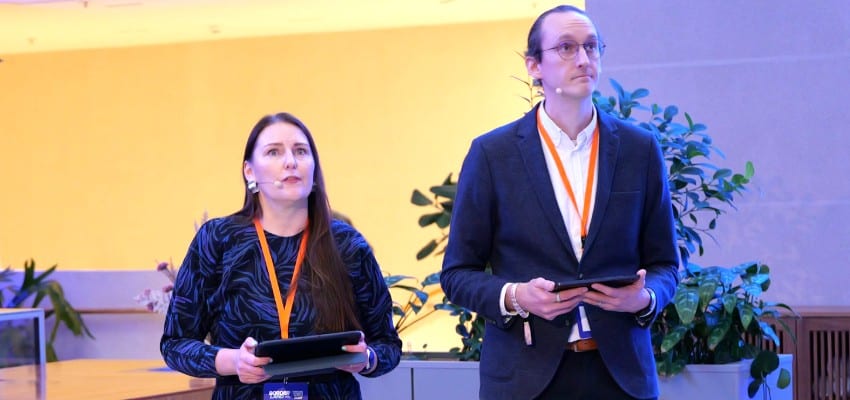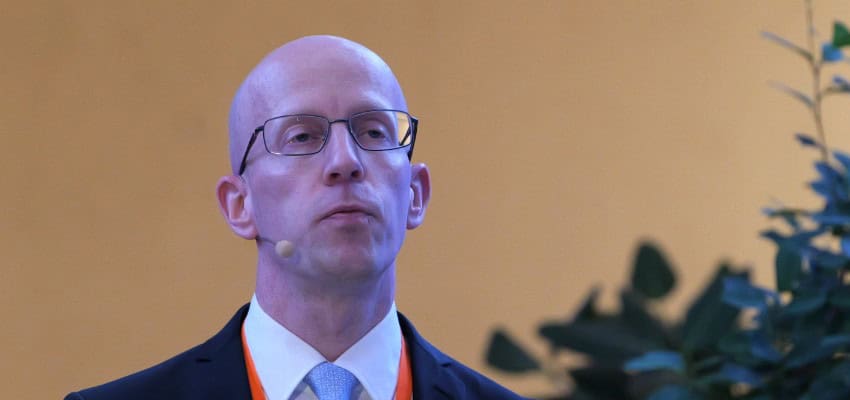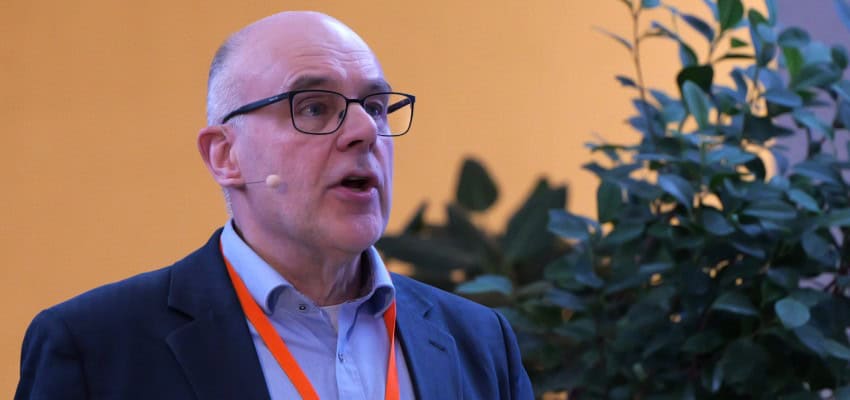Editor’s Note: As digital and physical security converge, Finland’s defense technology ecosystem is rapidly evolving to meet new threats. At BORDERLAND Goes Slush, held alongside Slush 2025 in Helsinki, leaders from government, military, and research outlined how dual-use technologies are reshaping national security. With keynote insights from Finland’s Foreign Minister Elina Valtonen, Finnish Defence Forces procurement chief Timo Vetri, VTT’s Sauli Eloranta, and Ukraine’s Ambassador Mykhailo Vydoinyk, the message was clear: traditional defense procurement is giving way to agile innovation partnerships. The event highlighted Finland’s growing defense tech sector—368 companies strong—and emphasized how secure-by-design principles and NATO standards are becoming essential for startups entering this space. From drone supply chains to critical infrastructure protection, the integration of civilian and military technologies presents both opportunities and cybersecurity challenges that will define the next generation of European defense.
Content Assessment: How Finland Is Reshaping Defense: BORDERLAND at Slush 2025
Information - 93%
Insight - 92%
Relevance - 92%
Objectivity - 90%
Authority - 95%
92%
Excellent
A short percentage-based assessment of the qualitative benefit expressed as a percentage of positive reception of the recent article from ComplexDiscovery OÜ titled, "How Finland Is Reshaping Defense: BORDERLAND at Slush 2025."
Industry News – Technology Beat
How Finland Is Reshaping Defense: BORDERLAND at Slush 2025
ComplexDiscovery Staff
HELSINKI – As Slush 2025 took over the Finnish capital, transforming it into a bustling epicenter for technology and entrepreneurship, a quieter yet deeply strategic event unfolded just a few blocks away. At Epicenter Helsinki, BORDERLAND Goes Slush convened an audience of about 300 defense professionals, tech founders, policymakers, and investors to explore the fusion of dual-use technology, national security, and geopolitical change.
While the world’s largest founder-focused startup conference generated headlines and hashtags, this satellite event focused on a more grounded set of questions: How do we secure borders in a digital age? Who builds the tools we need to respond to cyber-physical threats? And how fast must we move before the threats outpace innovation?
Finland’s Strategic Position
The event’s hosts, Joona Kotilainen and Karoliina Tilaeus, emphasized that the questions of border security are not abstract in Finland. With over 1,300 kilometers of border with Russia, Eastern Finland has long served as a geographic and technological buffer zone. The hosts noted that 36% of that border lies within the region represented by the event’s organizing cities and universities.

Their tone was candid and welcoming, aiming to spotlight opportunity rather than provoke fear. While acknowledging that Finland’s eastern border has been closed for over a year and the nation has joined NATO amid growing instability in Europe, they redirected the conversation to one of innovation. When environments change, Kotilainen noted, windows open for startups and technologists. The focus of BORDERLAND was not on threats themselves, but on the creative responses they now demand.
A Growing Defense Ecosystem
Setting the tone for the evening, Finland’s Minister for Foreign Affairs, Elina Valtonen, delivered a keynote that quickly shifted the audience’s mindset from strategic ambiguity to tactical urgency. Her remarks were both a diagnosis and a directive.
Valtonen pointed to new data revealing Finland’s expanding defense ecosystem: 368 companies currently operate in the security technology sector, with 144 of them classified as fast-growing startups. Even more telling was her emphasis on dual-use firms—those providing products suitable for both civilian and military applications—whose revenues are increasing by as much as 30 to 40 percent annually. This dynamic, she argued, is no longer niche. It is now a foundational principle for how European countries must think about defense innovation.
The geopolitical context made her appeal even sharper. In 2025 alone, the Ministry for Foreign Affairs issued nearly 900 export licenses for dual-use technologies, on track with previous years. But numbers, she stressed, don’t tell the full story. Agility, speed, and integration do.

Cybersecurity at the Core
For cybersecurity professionals, her speech contained several embedded calls to action. The growing dependence on AI, quantum computing, and digital communication infrastructures across defense and civilian spheres means that protecting such technologies requires a blend of technical excellence and compliance rigor. The lines between adversarial attacks, infrastructure failure, and information warfare are blurring. Therefore, startup solutions must be secure by design, scalable by necessity, and audit-ready from inception.
Valtonen put it succinctly: “Startups are not a nice to have, but the necessity.” The message resonated across the audience, particularly for those building technology that must meet both market demand and sovereign defense standards.
Transforming Defense Procurement
If Valtonen offered the strategic overview, Timo Vetri, Director of Procurement for the Finnish Defence Forces, provided the operational roadmap. His presentation traced how Finland’s procurement systems are shifting from long, linear acquisition cycles to faster, more modular engagements.
The numbers he revealed spoke volumes: since 2022, the defense sector has received more than €4 billion in supplemental funding, with over €2 billion earmarked for replenishing stock and supporting Ukraine. Last year alone, defense procurement topped €2.9 billion. But the transformation isn’t just financial—it’s procedural.
Vetri outlined how Finland’s NATO membership is reshaping procurement workflows, host nation support responsibilities, and logistics investments. With joint procurement projects already underway with Sweden and other NATO members, the landscape for startups and SMEs is opening up—particularly in fields like communications, AI, and advanced materials.

The Drone Revolution
His most striking comments centered on the future of drone acquisition. While Finland has historically lagged behind Ukraine and other front-runners in drone deployment, that’s set to change. Vetri previewed an upcoming ecosystem initiative aimed at building an end-to-end supply chain for defense-grade drones within Finland. From research and testing to manufacturing and deployment, the program aims to create an agile yet compliant structure that balances NATO standards with local innovation.
For cybersecurity and compliance professionals, these autonomous systems raise critical questions about data security, system integrity, and resilience against electronic warfare. Drone systems—especially those powered by AI—must be protected against both cyber intrusions and signal jamming while maintaining operational reliability in contested environments.
Bridging the Innovation Gap
Building on this, Sauli Eloranta, Vice President of the Technical Research Centre of Finland (VTT), introduced the audience to Finland’s growing role within NATO’s innovation architecture. Using the term “New Defense,” Eloranta described a shift from traditional defense contracting to a dynamic landscape shaped by rapid prototyping, public-private collaboration, and funding pathways that incentivize risk-taking.
He noted that VTT is now responsible for operating Finland’s DIANA accelerator, part of NATO’s broader effort to integrate dual-use technology companies into defense pipelines. Eloranta also shared news of the recently published “New Defense Playbook,” a guide for startups and technologists looking to navigate funding, procurement, and NATO validation processes.
Addressing the Valley of Death
Eloranta highlighted the “valley of death” that many defense-focused startups fall into: they build promising technologies but struggle to scale or certify them for real-world deployment. VTT, he explained, exists to bridge that divide. From lab testing to field validation, the institution’s capabilities are designed to derisk investment and shorten the time to operational relevance.
For cybersecurity experts, VTT’s role is increasingly vital. As security technologies move closer to critical infrastructure—power grids, transportation networks, communication systems—their reliability and resilience against cyber threats are paramount. The term “dual-use” may sound benign, but the security implications for systems that span civilian and military domains are complex and demanding.
Lessons from the Frontline
The final keynote was delivered by H.E. Mykhailo Vydoinyk, Ukraine’s Ambassador to Finland, whose remarks brought a potent mix of realism and urgency. Acknowledging the audience’s fatigue after a series of high-density speeches, he nonetheless commanded the room. “Don’t be afraid of war,” he said, reminding the crowd that life—and commerce—continues in many parts of Ukraine despite ongoing attacks.
His speech was a call to action directed at Finnish businesses, urging them to view Ukraine not only as a partner in need but as a testbed for innovation. He explained how Ukrainian companies, particularly in the drone and anti-drone sectors, have scaled rapidly thanks to government policies that enable direct unit-level procurement. Unlike NATO systems, which often require 3–5 years for certification, Ukraine’s internal platforms allow companies to go from concept to battlefield in months.
Real-World Testing Ground
He outlined scenarios in which Ukrainian firms were ready to relocate production to Finland, bringing both technology and know-how—but encountered slow bureaucratic processes and unclear licensing frameworks. He offered a solution: build joint venture models, open R&D centers in secure European countries, and use Ukraine as the proving ground for scalable innovation.
“You need modern technologies which can substitute manpower,” he said, “and this is again, robotic solutions, drones, and anti-drones.” The cybersecurity implications are clear: these rapidly deployed systems must be hardened against sophisticated electronic warfare tactics while maintaining the flexibility to adapt to evolving threats.
The Path Forward
As the evening wrapped up, the themes were clear and coherent. Finland’s defense posture is no longer simply about military readiness—it is about ecosystem coordination. For professionals across cybersecurity and defense technology, the event was a wake-up call.
Procurement is accelerating, but so are the regulatory expectations. Technologies are getting smarter, but so are adversaries. And innovation is happening, but often too slowly. In this new environment, cybersecurity is not just a technical requirement—it is a strategic imperative. The companies that succeed in defense tech will be those who can move fast while maintaining robust security, build adaptive systems while ensuring resilience against cyber threats, and understand that the future of national security lies not just in firepower but in protected, reliable digital frameworks.
The convergence of physical and digital security at borders represents a new frontier for cybersecurity professionals. As Finland builds its defense technology ecosystem, the integration of secure-by-design principles, compliance with NATO standards, and protection against sophisticated cyber threats will determine success. The question for security professionals is no longer whether to engage with defense innovation, but how quickly they can adapt their expertise to meet these urgent national security needs.
News Sources
- ComplexDiscovery Staff. (2025, November 18). BORDERLAND Goes Slush. Reported by Rob Robinson. ComplexDiscovery.
- Borderland – Security Eastern Finland Goes SLUSH 2025 (Business Joensuu)
- Slush 2025 | November 19 & 20, 2025 (Helsinki, Finland)
- Slush 2025 Event Information (Explore Slush)
Assisted by GAI and LLM Technologies
Additional Reading
- Google to CMOs at Slush 2025: Adapt to AI or Fall Behind
- Lessons from Slush 2025: How Harvey Is Scaling Domain-Specific AI for Legal and Beyond
- Building Stronger: The Porvoo Paradigm for Technology at Slush 2025
- Slush 2025 Survey: Startup Struggles Expose Risk, Resilience, and Opportunities for Governance Pros
- What UK Law Firms Really Want: Procurement Insights from LegalTechTalk 2025
- When Founders Have Red Lines: Investing Beyond ROI at Latitude59
Source: ComplexDiscovery OÜ





























